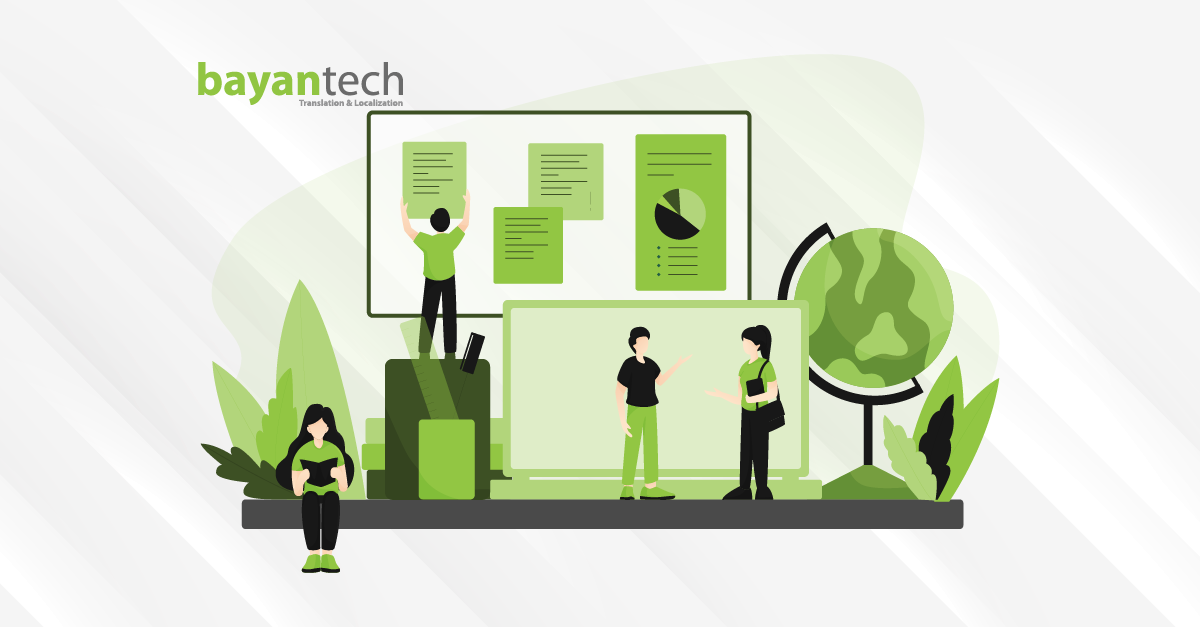Back translation has become an increasingly common term in the industry of translation, probably due to its great advantage. Having a translation project can be nerve-cracking; you are investing time and money for the sake of quality. However, you become much more at ease, when you learn about the quality control measures carried out after the translation phase; reviewing, editing, and proofreading.
But imagine if there is more to ensure quality? Imagine if there are additional quality steps. We are sure things won’t be that nerve-cracking anymore. This is what Back Translation can offer you.
Whether you are familiar with it or not, this blogpost brings you 7 precious things you need to know about Back Translation.
What Is Back Translation?
In its essence, it’s the process of translating a document, which has been previously translated, back to its original (source) language. For that, it’s sometimes referred to as Reverse Translation. So, for example, if a source document in English is translated into Arabic (the target language), a back translation entitles reversing the process and translating this Arabic document back into English (the source language).
Doing that, translators are able to interpret and compare the initial (original) translation, commonly referred to as Forward Translation, and the back translation to make sure that they accurately match, verifying accordingly quality. That’s why, this method is considered to be an efficient extra quality dimension.
Who Performs Back Translation?
It goes without saying that native back translators are best fitted for the job. Applying this to the previously mentioned example of the English source document being translated into Arabic would mean that the back translator working on this project should be an English-speaking translator who is fluent in Arabic. In other words, it’s necessary for the back translator to be a qualified in-country native speaker with extensive subject-matter expertise.
Most importantly, however, Back Translation is strictly required to be performed by an independent translator who has no prior involvement in the translation project, who hasn’t been exposed to the original document, and who has no knowledge of the objectives of the context. This way, the back translator gives an unbiased interpretation of the Forward Translation.
What Type of Texts Suitable for Back Translation?
The process isn’t limited to a specific type of texts; however, in most cases, it is performed for the most sensitive or high-value content of a translation or localization project, where high-risk information is provided and quality is critical. By sensitive or high-value content, we basically refer to technical, scientific, legal, academic, medical, and pharmaceutical documents, where a small detail counts. Due to the delicate nature of these documents and the overwhelming usage of jargons, they require a sharp eye to be able to maintain quality, consistency, and accuracy, which Back Translation can support and achieve.
Here are examples of sensitive content that would urgently require Back Translation:
- clinical trials,
- case studies,
- medical forms,
- scientific formulas,
- market surveys,
- questionnaires, and
- assessments,
Â
… to name a few.
How Does Back Translation Achieve Quality?
It’s quite obvious that Back Translation is a vital part of the quality control process, but we are still oblivious to HOW it can manage to achieve the kind of quality aimed for.
After finalizing the back translation, it is compared to the original (source) document to detect any discrepancies, inconsistencies, or any translation errors in order to fix them. “The quality of the translation is evaluated in terms of how accurately the back-translated version agrees with the original testâ€.  However, that doesn’t mean that the back translated version should be 100% identical to the original document. The idea is to be as closely equivalent in meaning as possible to the original, helping in identifying any confusion that may arise from the nuances of language. It’s a proofreading tool, a filter for any of these potential flaws:
- Terminology Inaccuracies
- Grammatical Inconsistencies
- Cultural Ambiguities
So, in case we have a medical document in hand, for instance, Back Translation can be an invaluable tool to identify any misuse of terminology that might incur serious consequences. Likewise, yet on a less critical level, in questionnaires and surveys, one slight grammatical error or any cultural inappropriateness can affect the customer’s experience and understanding of a question, which might end up in failing to communicate with the audience.
While comparing the two translations, differences are highlighted, traced, and later pointed out in a Reconciliation Report where inaccuracies or discrepancies are to be adjusted and amended to ensure the integrity of the final translation. All this is carried out seeking the consult of the original translator and with the help of the project manager who makes sure to optimize the final translation while of course passing the Reconciliation report to the client.
When to Use Back Translation?
In fact, performing it can be a matter of preferences to the person requesting a translation or localization service. However, many organizations and institutions, like Institutional Review Boards (IRBs) and Ethics committees, consider Back Translation an essential legal and regulatory requirement to verify the accuracy of the translation. This speaks volumes of its importance in attesting to the quality of a translation/localization project.
Now, it shouldn’t be just a matter of preferences anymore, it’s more of how far would a person go for his/her translation or localization project to be close to perfection.
So our answer to when to use Back Translation is ALWAYS. Make sure to ask the translation service provider if this procedure is included within its quality measures.
Are there any Disadvantages to Using Back Translation?
This has been a nagging question by people seeking translation and localization services, and probably one of the things you wish you have an answer for. It is said that Back Translation can cost time and money!
But, who said quality should be that far-fetching!
Back Translation is basically a quality tool developed to refine a translation, which accordingly helps facilitate people’s aims and objectives of their projects. So, maybe it’s not about the process itself; maybe it all comes down to who is providing it to you.
Professional translation service providers assign project managers who make sure to optimize the workflow for effective management of the customer’s schedule. In addition to that, it’s important to choose a translation service provider that can offer its Back Translation services for affordable cost. Thus, with well and effective management and the appropriate Back Translation practices, you can rest assured that this is one of the most efficient decisions to take ever.
On top of that, Back Translation tremendously saves time and money that one could later incur because of flawed translation.
Do all Language Service Providers offer Back Translation?
Well, strange but true, not all language service providers offer Back Translation. Because of that, people would get their translation done at one place and then get it back translated in other place, which is the worst case scenario. This jeopardizes the whole translation or localization project because, for one thing, it would definitely lack the coordination that should take place later during the reconciliation process.
To that end, it is highly advisable to seek a translation service provider that would take charge of your translation project from A to Z to ensure a smooth workflow. A professional translation service provider would make sure to carry out the original translation phase followed by the quality assurance process of reviewing, editing, and proofreading, and finally to the Back Translation procedure.
Moreover, if you are looking to shrink your list of options, you might want to entrust such stage of you project with a certified translation service provider.
Conclusion
Back Translation has become one of the most indispensable quality methods in the industry of translation and localization. It manages to detect any potential flaws or errors in order to produce an accurate and consistent translation.
If you have any upcoming translation or localization project, especially of a delicate nature, such as legal, medical, or scientific, don’t hesitate to request it and make sure the same vendor who translates back translates as well.
BayanTech can do that and more. Abiding by the (ISO 9001:2008) certification standards, we offer Back Translation services to the meticulous Forward Translation of your project, which is also followed by our 3-eye QA procedures. Our efficient teams of native-speaking translators, linguists, and reviewers work hand in hand with independent Back Translators, all led by our dedicated Project Managers who vouch for the quality of your projects.
For more information, contact us.







